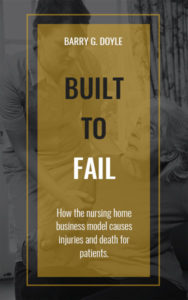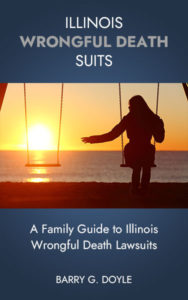The Illinois Department of Health has cited and fined The Admiral at the Lake when staff incorrectly assessed a 90-year-old resident with multiple health conditions as “low risk” for falling despite his extensive fall history, leading to a devastating fall that broke his neck in three places. The facility failed to implement proper safety measures and post-fall monitoring protocols, allowing a preventable accident that resulted in multiple fractures to the resident’s cervical spine.
The resident in question had been living at the facility for nearly two years with numerous serious health conditions including “unspecified fall, malignant neoplasm of bladder, heart failure, unspecified atrial fibrillation, hypertension, unsteadiness on feet, muscle weakness generalized, chronic kidney disease, and diverticulitis of intestine with perforation and abscess with bleeding.” His Medical Director confirmed that he “was substantially getting weaker, dependent on staff for activity of daily living” and was “at high risk for fall” due to his deteriorating condition.
The facility’s fall risk assessment system revealed dangerous inconsistencies that directly contributed to the resident’s injuries. Early assessments properly identified the resident’s high fall risk, with scores of “65 = high risk” in early March and “80 = high risk” in early April. However, a later assessment in late April showed a dramatic and inexplicable change to a “score of 3 = low risk,” which the Director of Nursing admitted was completely inaccurate.
This assessment error had devastating consequences because it led to inadequate safety measures being put in place. The Director of Nursing acknowledged that the resident “was not accurately assessed to prevent the fall which resulted to multiple neck fractures” and explained that “when fall risk assessment is not accurately done, appropriate intervention will not be in place and resident safety will be compromised.” The MDS/Care Plan Coordinator confirmed that “inaccurate fall assessment will lead to ineffective care plan and potentially another falls.”
The fall occurred in the early morning hours when the resident was found “in a sitting position on the floor in his room” after losing his balance while “trying to get out of bed.” The Licensed Practical Nurse who discovered him noted that the resident “denied pain, or hitting his head” and his “vital signs were stable,” leading staff to believe he had not suffered serious injuries. However, this initial assessment proved tragically wrong.
The facility’s response to the fall revealed additional systemic failures in their safety protocols. Multiple staff members acknowledged that there should be “seventy-two hours post fall documentation every shift to monitor the resident for any changes and to prevent medical complication,” but this critical monitoring was not performed. The resident’s clinical records showed “no documentation showing that 72 hours post fall monitoring/supervision was done post fall,” representing a serious breach of safety protocols.
The resident’s condition deteriorated over the following days, but the lack of proper post-fall monitoring meant that his injuries went undetected. Several days after the fall, staff finally noticed that the resident “was screaming when the resident was moving in bed,” prompting them to contact his physician and send him to the hospital for evaluation. Hospital testing revealed the devastating extent of his injuries: “multiple acute fracture at C4, C5 and C6,” meaning he had broken three vertebrae in his neck.
The Medical Director confirmed the seriousness of the situation, noting that the resident had experienced “a big fall” in early April and “another fall” in May, referring to the incident that caused the neck fractures. He explained that while the resident was taking Eliquis, a blood thinner, and initially “denied hitting his head,” it was still his “expectation that nurses will continue to monitor him every shift and document to rule out any complication.”
The incident highlighted multiple failures in the facility’s fall prevention program. The Director of Nursing, who serves as the Fall Coordinator, acknowledged that she “completes the fall risk assessment based on the root cause of the fall and collaborate with the care plan coordinator to update the care plan with new interventions to prevent further falls.” However, this process clearly failed in the resident’s case, as the dramatic reduction in his fall risk score from 80 to 3 had no basis in his actual condition or medical history.
The facility’s own policies require proper “resident supervision” as “a core component of the systems approach to safety” and mandate that “staff will attempt interventions, based on the assessment.” However, the inaccurate assessment led to inadequate interventions, allowing a high-risk resident to fall and sustain life-threatening injuries that could have been prevented with proper risk assessment and appropriate safety measures.
One of our core beliefs is that nursing homes are built to fail due to the business model they follow and that unnecessary accidental injuries and wrongful deaths of nursing home residents are the inevitable result. Our experienced Chicago nursing home lawyers are ready to help you understand what happened, why, and what your rights are. Contact us to get the help you need.


